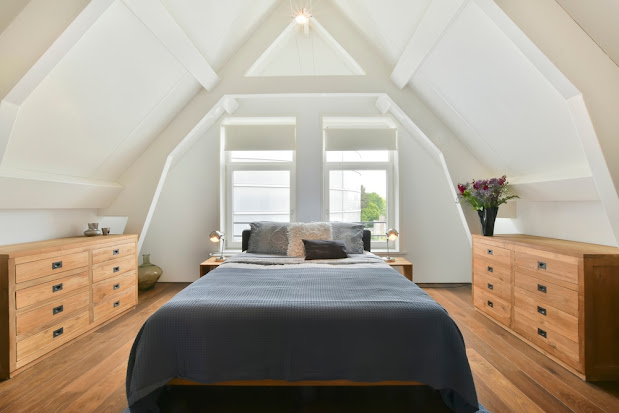 |
| Make Your Loft Conversion More Sustainable |
|
Homeowners and renters are seeking for methods to prioritise the
environment in their homes as sustainable and low-waste living grows increasingly
prominent in decoration. A loft conversion is not just a terrific way to add an
extra room to your home; you can also install systems to make your entire house
more sustainable as part of the conversion process. I'll describe how you can
make your loft conversion more eco-friendly by choosing the correct building
materials, insulation, and making use of your roof space in the sections below. Loft conversions in Southwest London may be a terrific way to open up your house
and provide much-needed extra space, but they can have a negative impact on the
environment if not carefully designed. When doing work on your roof area, it's
very necessary to keep sustainability in mind because design and construction
may have a big influence on your home's overall heating and energy efficiency. Following are the 5 ways to make your loft conversion more sustainable: 1. Mindful materials Begin by locating eco-friendly materials. Try to utilise salvaged wood
and brick since this is the most environmentally friendly alternative, or go
for sustainably managed forests. The most environmentally responsible solution for the roof is to reuse
the existing tiles. If this isn't possible or you need more, look for recovered
roof tiles or shingles manufactured from recycled rubber and wood fiber. 2. Necessary insulation If your area is uninsulated, your boiler will have to work more to keep
your house warm, increasing your property's overall carbon footprint. Install
insulation in the roof space's walls and ceiling to prevent this from
happening. Choose insulation produced from recycled glass, paper, or cellulose
fiber since it is more eco-friendly than many typical fiberglass designs. If
you want to go the additional mile, consider insulation produced from natural
materials such as hemp, cork, or sheep's wool. 3. Warming windows Installing triple or quadruple-glazed windows will significantly improve
energy efficiency. Warmth from the sun shining in will assist to heat the area
in the winter, and they may also be utilised to ventilate and cool the loft
during hot summer days, using less energy to heat and cool the space all year. 4. Smart finishers When the building is finished, you may focus on energy-efficient
fixtures and fittings. LED lighting consumes significantly less energy than
standard halogen lights, so make sure you use it throughout. If you're
installing an en suite bathroom, use low-flush toilets as well as water-saving
low-flow taps and showers. When selecting decor, try to be environmentally conscious as well. Use
eco-friendly paints to add colour and design without affecting the environment,
and go for sustainable flooring such as recycled wood and tiles or a natural
wool carpet. 5. Utilize the roof space When you convert your loft, you may use the roof space to
add some eco-friendly features to your home. You may invest in solar panels,
which use solar energy to create power. Although solar panels may help attract
renters, they are also extremely expensive to install, and because your tenant
pays the utilities, you are unlikely to recoup your investment through
decreased energy expenses. As a result, solar panels may not be the greatest
solution for a rental home. For homeowners and renters alike, sustainability is more important than
ever. You may include an eco-friendly and sustainable loft conversion into your
home by following the advice mentioned above. For more details, visit our website, https://www.doranbrosconstruction.co.uk/ |
Comments
Post a Comment